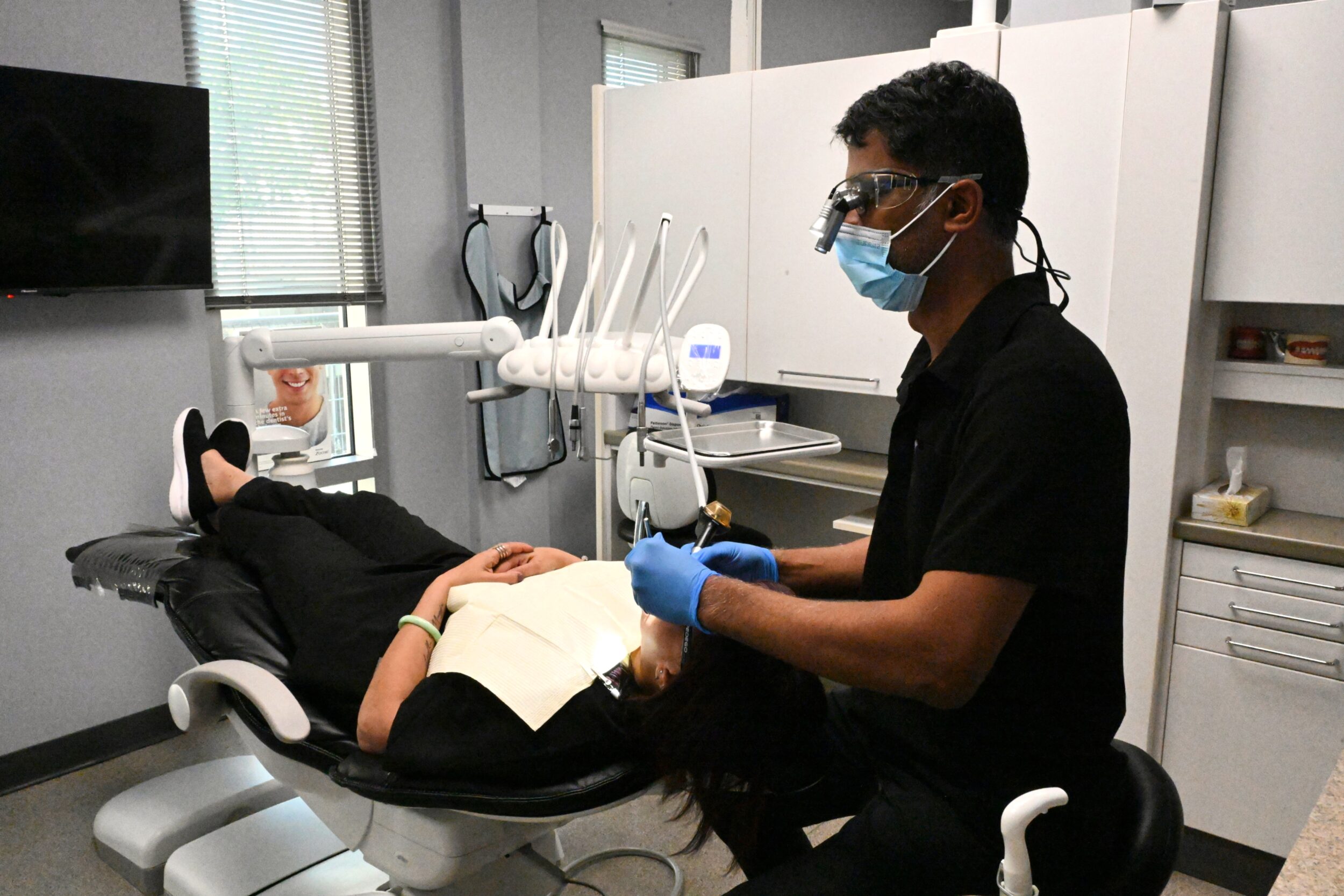Periodontal Scaling Root Planing in Calgary, AB
Scaling & root planing is performed to remove etiological agents causing inflammation in gingival (gum) tissue and surrounding bone. Dental plaque and tartar (calculus) are common etiologic agents removed by conventional periodontal therapy.
The non-surgical procedures, which completely cleanse the periodontium, are extremely effective in treating gingivitis (mild gum inflammation) and moderate/severe periodontitis.

Reasons for scaling and root planing
Scaling and root planning may be used both as a preventive measure and as a stand-alone treatment. A periodontitis sufferer undergoes these procedures as a preventative measure.
These dental procedures may be necessary for the following reasons:
- Prevention of disease –
Bacteria that cause periodontal infections can travel through the bloodstream to other parts of the body. Researchers have found a link between periodontal bacteria and lung infections and heart disease. In addition to removing bacteria, scaling and root planing halt the progression of periodontal disease, thus preventing the spread of the bacteria to other parts of the body. - Aesthetic effects –
The purpose of scaling and root planing is to remove tartar and plaque from the teeth and below the gum line. In addition, scaling and root planning will remove superficial stains from the teeth. - Protection of teeth –
There is a greater risk of periodontal disease when gum pockets exceed 3mm in depth. Bacteria tend to multiply as pockets deepen. Inflammation by the body eventually destroys gingival and bone tissue, resulting in tooth loss. In the developed world, periodontal disease is the leading cause of tooth loss. - Having better breath –
Halitosis (bad breath) is a common sign of periodontal disease. A persistent bad odor in the oral cavity may be caused by food particles and bacteria, which can be alleviated by cleaning procedures such as scaling and root planing.
How does scaling and root planing work?
After a thorough examination of the mouth, scaling and root planing treatments are performed. Before recommending or beginning these procedures, the dentist will take X-rays, perform visual examinations, and make a diagnosis.
A local anesthetic may be used to treat the gums, if there is calculus (tartar) present, if the pockets are deep, and if periodontitis is progressing.
The scaling process –
Ultrasonic scaling tools may be used to perform this procedure with special dental instruments. Plaque and calculus are removed from crowns and roots with the scaling tool. Most scaling tools include an irrigation process that can also deliver an antimicrobial agent beneath the gum line to help reduce oral bacteria.
Root Planing –
In this procedure, cementum and surface dentin that are embedded with unwanted microorganisms, toxins, and tartar are removed. In order to promote good healing, the root of the tooth is literally smoothed. A clean, smooth root surface reduces the likelihood of bacteria colonizing the root in the future.
Following these deep cleaning procedures, antibiotics may be administered to the gum pockets. As a result, irritation will be soothed, and the gum tissues will heal more quickly.
The dentist or hygienist will examine the gums again during the next appointment to determine how well the pockets have healed. There may be a need for additional and more intensive treatment if the gum pockets measure more than 3mm in depth.
Please contact your dentist if you have any concerns or questions about scaling and root planing or periodontal disease.